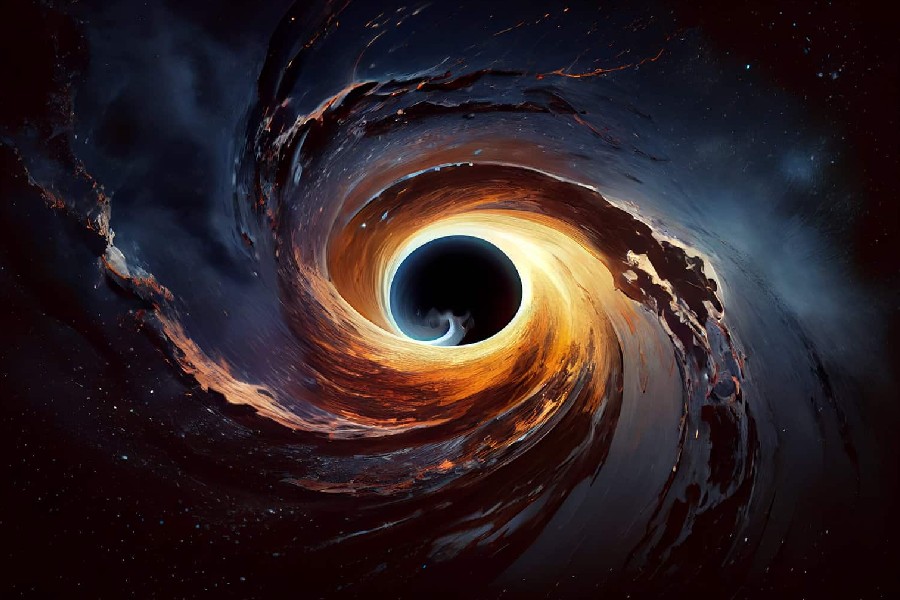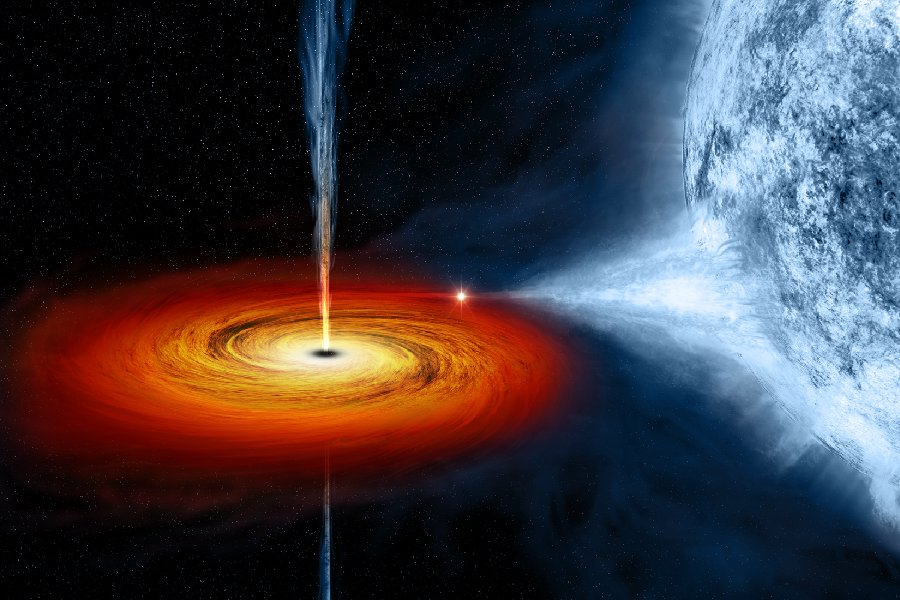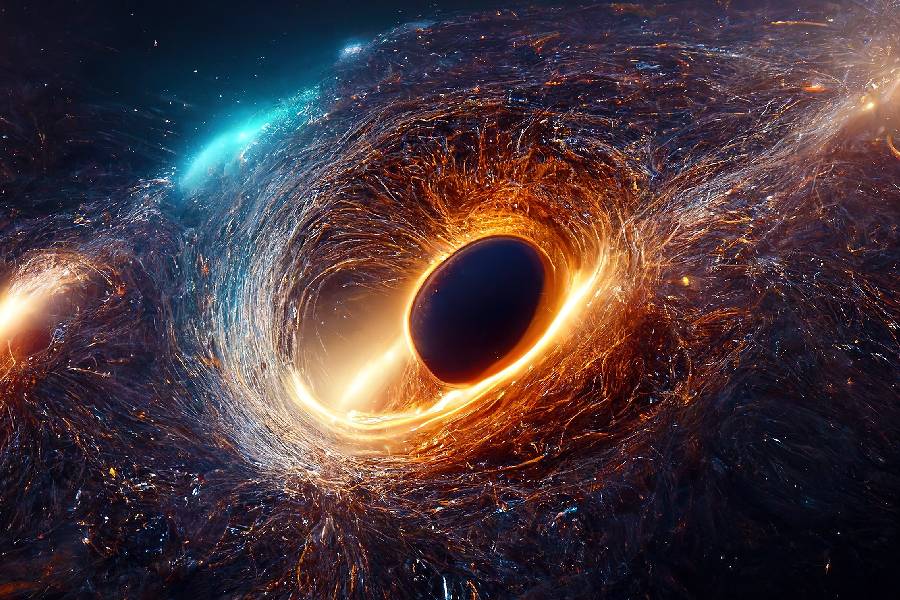Black holes have long fascinated scientists and the public with their mysterious nature and bizarre effects on the very fabric of space-time. There are many bewildering facts about black holes as these dense objects warp physics in extraordinary ways, providing opportunities to study the extremes of astrophysical forces.
Mysteries remain to be solved about these gravitational prisons, which continue capturing scientific wonder through the cosmos’s most extreme manifestations of Einstein’s relativity theories.
In this article, we will examine black holes and their impact on surrounding structures – including the related phenomena of quasars, pulsars, and gamma-ray bursts that signify black holes’ presence across cosmic spans. Let’s dive in!
Facts About Black Holes
What are some interesting facts about black holes? There are numerous mesmerizing facts surrounding black holes. However, we’ve chosen to elaborate only on five of them in this article, and they are:
- Three categories of black holes
- Infinite abyss in the heart of black holes
- Black holes as cosmic vacuum cleaners
- Event horizon – points of no return
- Quasars, pulsars, and gamma-ray bursts – black holes’ energy signatures

There are three categories of black holes
Stellar-sized black holes
The smallest category, stellar black holes, range from about 10 to 100 times the mass of our Sun. Black holes form from the collapsed cores of large stars after supernova explosions.
Their intense gravitational pull lets them vacuum up and consume neighboring objects that pass too close. Though puny galactic travelers, stellar black holes unveil extreme physics on a relatively approachable scale.
Supermassive giants lurking in galactic centers
Anchoring swirling galaxy cores, these behemoths boast millions to billions of solar masses. Supermassive matter likely arises from huge volumes of collapsing primordial cloud matter during initial galactic buildup.
Titan gravity makes mealtimes easy, with ample surrounding gasses perpetually spiraling inward. Powering movements of entire galaxies, a supermassive black hole’s far reach shapes stellar behaviors across immense lightyear distances.
Intermediate black holes and their enigmatic nature
Straddling stellar and supermassive classes, intermediate black holes remain more perplexing to categorize, with less certainty about their creation. Ranging 1,000 to 1,000,000 solar masses, these middleweight black holes represent a theoretical puzzle.
Scientists are still working on figuring out how these black holes form. They’re exploring different ideas, like whether they start as really big stellar black holes or smaller versions of supermassive black holes. The fact that there aren’t many intermediate-sized black holes makes it harder to understand their role in the universe right now.
At the heart of black holes lies an infinite abyss
At the very heart of every black hole lies one of the most bizarre predicted occurrences in physics – an infinitely dense point known as the singularity. Representing a zone where the normal rules of spacetime break down, the singularity presses matter to its absolute limit.
The mind-boggling idea of infinite mass compression
Within the intense gravity surrounding a newly collapsed black hole, the material continues compressing inward past expectations from standard physics. Atoms stretch and distort into a soup of subatomic particles as gravity grows exponentially stronger near the core.
In simple terms, the forces in particle and high-energy physics can’t oppose the overwhelming pull of gravity inside a black hole. This means that the contraction continues without any hindrance, with more mass getting squeezed into a smaller space until it reaches a point of infinite density.
Black holes act as cosmic vacuum cleaners, devouring everything in their path
The immense gravitational suction wielded by black holes allows them to voraciously consume anything straying too close. Within a few dozen miles of the event horizon boundary, tidal forces grow strong enough to shred apart asteroids or comets into swirling streams plunging past the point of no return.
When a black hole’s gravity gradient pulls harder on one side of a star, it stretches the star out. Eventually, the star’s density changes, causing a dramatic collapse. Some dense cores may momentarily resist, but in the end, they’ll join the black hole’s collection of mass.
How gravitational forces enable black holes to consume matter
When a black hole forms, it’s because a ton of matter gets all squished together, warping space and time like crazy. As the star collapses, the core becomes super dense, which makes the gravitational pull super strong. The space-time around the black hole gets all curved, creating so intense gravity that exceeds the speed of light.
This means that past what is known as the event horizon threshold, all material is doomed to a fate of endless falling inward with no hope of escape. Not even the fastest entity in the universe – a beam of light – can resist getting sucked into oblivion after crossing this boundary of no return.
As matter accelerates faster and faster while spiraling into the black hole, physics starts breaking down in shocking ways. All of space-time becomes hideously warped and distorted. This leads up to the central zone of infinite density known as the singularity – where the known laws of physics completely collapse into the quantum realm. The extreme ways black holes can bend space-time and matter remain among the strangest found anywhere in our universe.

Implications of black hole ‘cleaning’ on surrounding celestial bodies
The invisible mouth of a black hole leaves quite a visible mess as it vacuums up ambient gases and the remnants of shredded stars, which collide and compress outside the event horizon, releasing intense bursts of X-ray radiation.
Smaller black holes can stir up and make more stars form in their vicinity by consuming interstellar matter. But when it comes to supermassive black holes, their massive appetite for devouring stuff can strip galaxies of the gases needed to form new stars. Once the spiral structures are fully digested, the galaxy ends up as a red, dead elliptical system.
Event horizons act like a point of no return
The event horizon represents the ultimate threshold for any object approaching powerful gravitational fields – cross this boundary, and no return or outward communication becomes remotely possible. This inescapable veil shrouds the inner zones of a black hole where bizarre physics unfolds.
While the horizon might seem vague visually, it’s actually a super important point. Mathematically speaking, it’s the point of no return where the speed needed to orbit or escape becomes faster than the cosmic speed limit set by special relativity. Even light’s speed proves inadequate for freedom, bending inexorably back into the abyss within.
Point of no return
Drifting toward a stellar black hole, an astronaut may note a little unusual initially before crossing the dark event horizon. But this invisible boundary separates two realms – the last glimpse of the familiar cosmos outside and a plunge into the unknown ripped from external space and time reference points.
Once crossing the horizon, it’s like being caught in cosmic quicksand. The gravitational pull gets insanely strong, making it impossible for regular engines to escape.
Quasars, pulsars, and gamma rays are the energy signatures revealing black holes
Though invisible, black holes reveal their presence through other bright cosmic events closely tied to them – namely quasars, pulsars, and gamma-ray bursts emitting intense energy signatures.
Quasars outshine galaxies powered by matter swirling around supermassive black holes, unleashing bright jets and strong radio waves reflecting extreme relativistic physics.
Pulsars show rhythmic flashing from their origins as rapidly spinning neutron stars, born in supernovas and also destined to eventually collapse into black holes.
Meanwhile, gamma-ray bursts represent the highest energy explosions in the universe, likely fueled by dying stars transitioning into stellar black holes at the end of their life cycle.
By observing each energetic phenomenon, astronomers garner insights into the incredible processes occurring around cosmic black holes.
Black Hole Fun Facts
- The largest known black hole is S5 0014+81, with a mass 40 billion times greater than our Sun! Now that’s super-sized.
- If you fell into a small, stellar black hole, the intense spaghettification from tidal forces would stretch you out like pasta! Not an ideal fate.
- The closest known black hole to Earth is a triple system called A0620-00 in the constellation Monoceros, a mere 3,000 light years away. Practically our neighbor!
- The unusual galaxy Messier 87 features a massive black hole shooting out energetic beams almost 5,000 light-years long. Now that’s one crazy powerful cosmic jet stream!
- If theoretically, anyhow, you entered a large enough spinning black hole, passing an event horizon could send you through a tunnel called an Einstein-Rosen bridge to another location in space and time!

Conclusion
Black holes continue to confound and intrigue scientists across disciplines, unlocking ever deeper mysteries the more we study them. From their tremendously dense singularities to event horizons permanently separating internal reality from the external universe, black holes push physics to its breaking point and beyond.
With a more detailed insight into the appearance of space and time itself warping and twisting, you will find it easier to appreciate how much remains to be uncovered about these gravitational abysses.
By learning these captivating facts about black holes, we gain insight into the extreme possibilities allowed in the universe under intense gravitational conditions. When densities become infinite, the laws of physics as we know them collapse in these exotic celestial objects.
Black holes represent a journey to contemplate the universe’s strangest and most extreme manifestations. Concepts like infinite density and distortions of time itself challenge our imaginations. Continuing to uncover black hole mysteries enriches our cosmic perspective on nature’s true boundaries.
